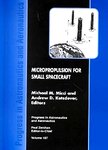版权所有:内蒙古大学图书馆 技术提供:维普资讯• 智图
内蒙古自治区呼和浩特市赛罕区大学西街235号 邮编: 010021

丛 书 名:Progress in Astronautics and Aeronautics
I S B N:(纸本) 9781563474484
出 版 社:American Institute of Aeronautics and Astronautics Inc.
出 版 年:2000年
页 数:496页
主 题 词:Aerodynamics Aeronautical Engineering Aeronautics Aerospace Sciences Air Forces Aircraft Engines Astrodynamics Astronautics Astronomical Observatory Astronomy Attitude Control Aviation Avionics Boundary Layers Catalysis Chemical Kinetics Combustion Chambers Computational Fluid Dynamics Conservation of Momentum Equations Convection Electric Heating Electric Propulsion Electrically Powered Rocket Engine Electrochemical Cells Electrodes Energy Energy Storage and Batteries Enthalpy Equations of Fluid Dynamics European Space Agency Finite Element Method Flow Regimes Fluid Dynamics Fluid Flow Properties Guidance, Navigation, and Control Systems Heat Conduction Heat Transfer Heating System Heating, Ventilating, and Air Conditioning Ideal Gas Ion Thruster Jet Engines Mass Transfer Military Airbases Military Aviation Monopropellants NASA NASA Facilities NASA Programs Non-Equilibrium Thermodynamics Nozzles Numerical Analysis Orbital Maneuvers Phase Transition Planetary Rings Planetary Science and Exploration Planets Plasma Physics Propellant Propulsion and Power Radiative Heat Transfer Radiative Heating Rocket Engine Rocket Propellant Rocketry Space Agencies Space Missions Space Observatory Space Orbit Space Science and Technology Space Tethers Spacecraft Propulsion Thermal Control and Protection Thermal Diffusion Thermal Insulation Thermal Measurement Thermal Modeling and Analysis Thermochemistry and Chemical Kinetics Thermocouples Thermodynamic Process Thermodynamic Properties Thermodynamics Thermophysical Properties Thermophysics and Heat Transfer Turbines Turbomachinery United States Air Force Base Vortex Dynamics
学科分类:080703[工学-动力机械及工程] 082502[工学-航空宇航推进理论与工程] 08[工学] 0807[工学-动力工程及工程热物理] 0825[工学-航空宇航科学与技术]
摘 要:Micropropulsion is an enabling technology for microspacecraft operations by making missions possible that otherwise could not be performed. For example, the formation and maintenance of platoons of microspacecraft will require a maneuvering capability to counter orbital perturbations. Microspacecraft missions involving large spacecraft resupply, repair, or surveillance will also require maneuverability. The mission requirements for microspacecraft will be varied and in some cases a large range of capability might be required on the same spacecraft. Micropropulsion systems must be extremely versatile to address these requirements. It is clear that there is a need for micropropulsion systems from high-thrust chemical engines to high specific impulse electric thrusters to fulfill specific missions just as for larger spacecraft. It is becoming increasingly evident that microspacecraft will require efficient propulsion systems to enable many of the missions currently being investigated. The systems constraints on mass, power, maximum voltage, and volume with which microspacecraft will have to contend pose several challenges to the propulsion system designer. Micropropulsion concepts that address these limitations in unique and beneficial ways will be of interest to the microspacecraft community. Written by leading experts in the field, this book shows the state of the art in micropropulsion concepts and activities at the early stages in the development of this new and exciting research area.